Choosing In-Ear Monitors
We are often asked what in-ear monitors we would recommend for use with Aviom Personal Mixers.
While we can’t recommend one specific brand or another, we can offer you some guidelines to help you make a choice that works for you.
Six Factors to Consider When Choosing In-Ears
#1 In-Ear Monitors ≠ iPod Earbuds
Earphones that are designed for casual listening with your iPod (or other personal listening device) are generally not great choices for using on stage. The biggest issue is that they’re not designed to block out loud ambient sounds found on most stages (even ones where everyone is using in-ears so there are no wedges) or deal with the loud transients that a live mix often brings. Often, you’ll turn them up too loud to make up for the lack of isolation, and you’ll lose clarity and risk serious damage to your ears. $30 earphones just aren’t going to perform very well on stage, and economizing here is not a great choice.
(The nice thing, though, is that you may find the in-ear monitors you get for playing live also sound great with your iPod, especially in a loud environment like an airplane.)
#2 Wired or Wireless
Lots of people assume at first that all in-ear monitors are wireless because that’s what you see most often on professional concert stages and on TV. But the choice of earphone is really independent of the decision to go wired or wireless, and many earphone manufacturers don’t even sell wireless transmitter/receiver units. But you can certainly connect their earphones to other manufacturers’ wireless units.
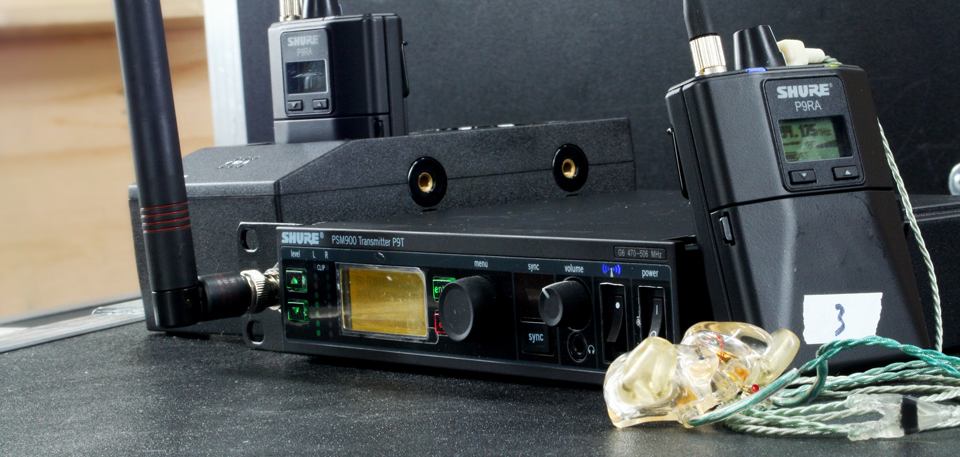
Wireless in-ears are great for performers who need to move around but may be an unnecessary expense for others. Either way, picking earphones and picking a wireless rig are separate choices.
There’s no question that, for many musicians, not being tethered by a wire is incredibly liberating and for performers—especially lead singers—who move around a lot, a wired system simply won’t work. Remember, though, that the wireless link adds cost and complexity, and that being wireless is next to useless for some musicians. Most drummers, for instance, aren’t going to get a lot of benefit from being wireless. Neither is a guitarist whose guitar isn’t also wireless.
So our advice is to go wireless where it really matters and, for the musicians for whom it won’t make a difference, spend that money on getting better quality earphones.
#3 Universal Fit or Custom Molded
Universal fit in-ears (sometimes called “generic fit”) have replaceable foam or soft rubber tips that adapt to the shape of your ears after you insert them. (Tip: Be sure to compress the foam before you insert them so you get the earphone nozzle properly in your ear canal and the tip can then expand in your ear to seal out ambient sound.)
Custom-molded in-ears place the speaker driver(s) and nozzle in a case that’s molded to the exact shape of your ear. This requires that you make a visit to an audiologist, who will make an impression of your ear that’s then used by the manufacturer of the earphone to make the case that holds the elements of the earphone itself.
So how do you choose? Not surprisingly, universals are, as a general rule, substantially less expensive than customs of a similar quality. Because universals can be shared, they’re a great solution for churches where gear is shared among multiple ensembles and where musicians sub in and out (just be sure to keep a supply of clean foam/rubber tips on hand). Customs can provide superior comfort (especially over extended wearing), better isolation, and improved sound quality. Which is not say that universals can’t sound great too. They can.
#4 How Many Drivers
As with full sized speakers, having more drivers generally means getting better sound because each driver is handling a narrower frequency range or, combined, the drivers are covering a wider frequency range with more efficiency and clarity. So generally speaking, multi-driver models will sound better than similar single-driver models, and the more drivers an earphone has, the more potential it has to sound fantastic. That, of course, doesn’t mean that every multi-driver earphone is going to sound good or better than every single-driver model or that every three-driver model will sound better than a dual-driver.
#5 Audio Specs
You’ll generally see four different technical specs with earbuds: amount of isolation, frequency response, sensitivity, and impedance.
Amount of isolation (sometimes called noise attenuation or reduction) is measured in dB (decibels) and indicates how much outside sound is blocked by the earpiece itself; a higher number means more sound is being blocked. That means you’ll hear your monitor mix with less interference from the outside world.
Frequency response tells you what pitches (frequencies) the earphones are capable of producing. Human hearing spans 20Hz to 20kHz, so the more of that range that’s covered, the better.
Sensitivity and impedance both translate into volume: the lower the sensitivity and the higher the impedance, the more power you’ll require from the headphone amp/personal mixer/wireless pack to produce a given volume.
Generally speaking, there’s no need to worry about small differences in impedance specs, as most in-ear monitors are similarly fairly low impedance (typically in the neighborhood of 20 or 30 ohms). Note, however, that some headphones (particularly some high end studio headphones) have much higher impedance values, sometimes well north of 100 ohms; these devices will require noticeably more power from the device they’re connected to in order to produce similar volumes.
Sensitivity specs indicate how much volume (measured in dB) a speaker (in this case, the speakers in the in-ear monitor) will produce when driven with a specified amount of power. As with impedance, you don’t really need to worry about small variations in the sensitivity specs from one model to another. And remember that sensitivity and impedance both affect the amount of power required to produce a certain amount of volume, so consider the two specs together rather than in isolation.
More important than all these specs, though, is how do the earphones sound. Basic frequency response specs, for instance, only tell you which frequencies the device can produce; a simple range, though, doesn’t give you any info about the curve of that response, which translates into the character of the sound. Product descriptions will often give you some guidance about the character of the sound (particularly, it seems, how much low end is emphasized), but unfortunately there’s really only one true way to definitively evaluate how a given pair of earphones sound: listening.
One final note on audio specs: be wary of earphones that don’t include audio specs. That may be a sign that the earphones you’re looking at are really designed for casual personal listening (where specs may not matter as much) and won’t perform very well with the unique demands of live music.
#6 Personal Preference
Lastly, be sure to consider personal preferences. That goes for comfort, sound, and even look. We’re all different, and we’re not all going to love the same in-ear monitors. So don’t expect one size to fit all. Even with universal fit earphones.
The Bottom Line
It’s really important to invest in good in-ear monitors if you want to have a good in-ear experience. That’s even more true than it is for wedges, since your in-ears are basically all you’re going to hear (and you don’t have to wear a wedge monitor, so comfort matters more with in-ears too!). The most important piece of the equation is how good the earphones sound, so our advice is to get the best sounding in-ears you can and then add in the “extras” of custom molding and wireless. Remember that a great pair of universals will likely give you a better overall experience than a mediocre pair of wireless customs. And you can always add the wireless link later.
Have a favorite in-ear monitor? Share it in the comments!


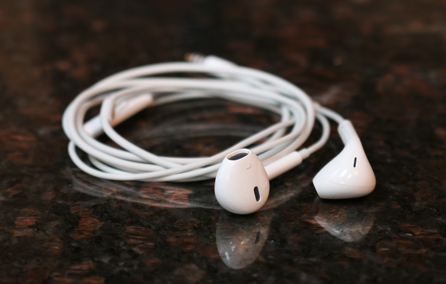
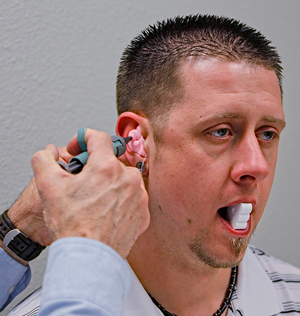
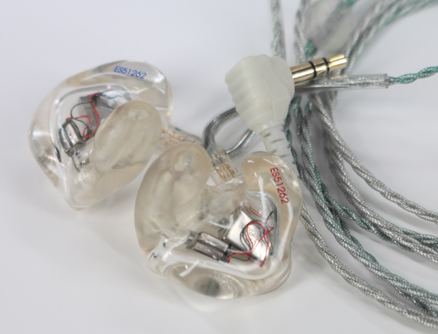
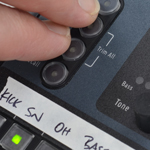
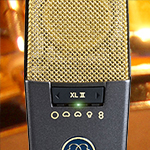

This info is awesome. This will help me so much with my project at school.
Unbelievable detail and explanation from Aviom. I’m going to have to update my site to reflect much of your thoughts. You know what they say, you learn from the best. Thanks for laying this out for your readers. http://www.bestinearmonitors.net/
Thanks for the comment, Sam! Glad the post was useful to you.
I’ve been using IEMs professionally for about 13 years. I am now on my third set of “ears”, each of which have been custom-formed from molds. Here are some observations of the pros and cons of each distinctly different style, from my perspective.
– Sensaphonics (Chicago, IL). My first IEMs were made from a pliable material and were the most comfortable set I’ve owned. They did not fatigue my ears after hours of continuous wearing. This set had two drivers (a “woofer” and a “tweeter”) and had a very good sound. They were pretty isolating – little leakage of outside sound. The negatives of this set were that they were not repairable. The wires were permanently affixed to the earpieces. Sure enough when I finally had a wire fail it was expensive to repair. Eventually I decided to try another manufacturer.
– Ultimate Ears UE5. Also a dual driver design. The earpiece was rigid, which was a plus in that the drivers could be repaired and the lead wires were replaceable (I required both repairs on this set.) The negative of this design for me is that the rigid earpiece is less comfortable and can be irritating to the ear after prolonged use. The earpiece is also fragile. I finally moved to my third set of IEMs when the lid of a road case closed on one of my earpieces and shattered it. I should note that the repaceable cable is a great feature if you tend to remove and replace your “ears” during performance. One of my bands mixes from the stage in small venues and I would often pull out the right earpiece to hear the room as well as my mix. I actually prefer this balance of IEM and ambient.
– JH Audio JH13. This was my Cadillac IEM purchase – a six-driver model. This set was more than twice as expensive as the UEs. The sound is excellent and the rigid earpiece is repairable with a replaceable lead cable. There are comfort issues similar to the UEs, and I have to be careful to not crush the delicate hard shell. In my opinion, the added cost for additional drivers is not worth it for the cost differential. A six-driver earpiece does not sound three times better than a two-driver earpiece. I did not have the opportunity to A-B the two but I don’t believe there is a significant appreciable difference in the sound (again, in a live setting where lots of variables come into play.)
If I ever purchase another set of ears I will be tempted to choose a set designed for some outside leakage (less isolation). Isolation can be managed to some degree by mixing ambient room noise into your mix, either with a separate room mic channel or with an ambient feature such as that included on the Aviom A360.
A word about wireless operation – I’ve been using Shure wireless units for my ears from day one. The freedom to move around is wonderful, and having fewer wires to deal with is very liberating. However, it is a considerable expense to deal with (good units sell for upwards of about $500). Also, the user needs to be aware that wireless operation is not without its own set of problems and bugs. Some venues I play in have areas that have strange dropouts and surges (radio interference phenomena). I’m used to it and typically can adjust by simply moving my body to a slightly different position, but I’m sure it can be distracting and annoying for someone not expecting this. Horn players I work with plug their IEMs directly into their Aviom units.
Thanks for the great comment, Pat!
I am an alto vocalist in a large church and have used universal in ears for several years but looking to upgrade to custom. Any recommendations?
Kara, thanks for the comment and sorry for the slow reply (we had a technical issue here). The models mentioned in previous comments are certainly ones worth checking out (we should note that no one here has any personal experience with 1964s). For what it’s worth, a number of us here are very happy Westone users. If you like the universals you’ve been using, you might want to check to see if that manufacturer offers a custom version. Additional recommendations are welcome!
I would recommend looking at 64 audio. I have a pair of V3 customs and love them! I am a drummer.
I’m an alto vocalist in a large church and have used universal in ears for a few years but am looking to upgrade to custom. Any recommendations?
I love my 1964’s. Great fit, great sound, great price
Out of interest how do you feel about using your monitors for personal/ipod music listening? Are they just too flat?
Westone, all day. Nobody does in-ears better.
I’m a bass player new to in ear systems. I also play in a band with 3 singers, so I need to hear everyone, and my bass and guitars. Without breaking the bank. What would you recommend without spending the big $$
Rob, especially since you’re a bass player, you’ll really want to make sure that you’re using earphones that are specifically designed for playing live music as opposed to listening to MP3s etc., so make sure any model you consider isn’t marketed as “portable audio” or “personal listening” but IS designed for on-stage use. Some companies make both. Beyond that, probably the best way to get good results while economizing is to use universal fit/generic earphones rather than custom molded and to use wired rather than wireless. That way, you’re spending your money on the actual drivers. We’ve run into lots of people (including bassists) who are very happy with their Westone (e.g., UM2 or Pro20) or Shure (e.g., SE425) universal fit in-ears. Those models are all dual driver options, and both companies also offer single-driver options for a bit less money. Hope that helps! Thanks for commenting.
Westones – Ived used several and love them all but my current favs are um3s – unbearable and affordable!
Ultimate Ears